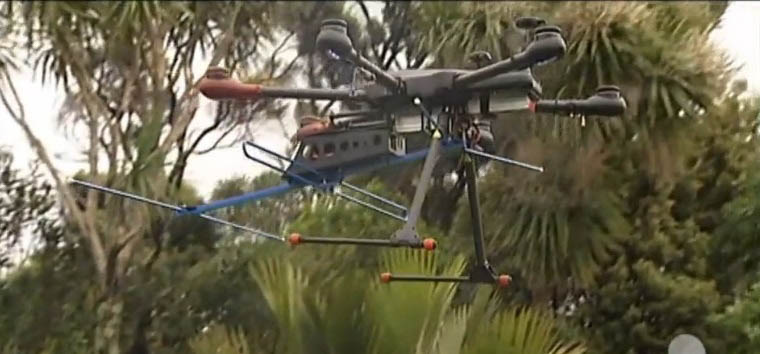WWF-New Zealand Conservation Innovation Awards winner DroneCounts is taking wildlife tracking to the next level in the urgent fight to stem the tragic loss of species, both locally and globally.
Thought to be a world first, DroneCounts can GPS track and map the location of tagged endangered species, providing time-synchronised data about the target species’ behaviour to assist conservation management. The system can also be used to track wildlife poachers.
DroneCounts took flight after winning $25,000 through the 2016 Conservation Innovation Awards, which enabled the team to further refine the unmanned aerial vehicle (UAV) design and build a flexible information gathering system that is more efficient, cheaper and saves time and energy.
“The Conservation Innovation Awards celebrate Kiwi innovators whose bright ideas, like DroneCounts, look set to make a real difference in the fight to protect our precious ecosystems and native species,” said Livia Esterhazy, WWF-New Zealand’s Chief Executive Officer. “We welcome big, bold, game-changing ideas.”
Open from 25 September to 15 October, the 2017 Conservation Innovation Awards will reward innovative environmental game-changers. To submit an idea, visit www.wwf.org.nz/innovation. A prize package of $25,000 will be awarded to each of the three winners. The 2017 Awards are supported by The Tindall Foundation, Department of Conservation, Callaghan Innovation and New Zealand’s Biological Heritage National Science Challenge.
“Business as usual is no longer an option,” Ms Esterhazy said. “Our native species extinction rates in New Zealand are among the highest in the world. To reverse these trends, conservation innovation is imperative. We must seek transformational change and rapidly create new solutions. Together, we can make a difference and deliver world-leading conservation innovation!”
The men behind the DroneCounts invention are Auckland-based Philip Solaris (robotic aviation company X-craft) and John Sumich (Ark in the Park and Habitat Te Henga).
This innovative idea was sparked when they realised traditional approaches to wildlife monitoring were severely limited by old-fashioned technology, vegetation, distance, terrain, weather and operator safety.
Mr Solaris said the DroneCounts aircraft operated as an ‘on-call’ data collector, providing crucial data in the most efficient way without the need of human intervention.
The capabilities, opportunities and applications of this new system are seemingly limitless – it can operate on land, in air or water, at night, in extreme temperatures and weather conditions. The system can be customised to track wildlife, livestock or even emergency services personnel conducting search and rescue missions after disaster events.
Before commercialisation, the DroneCounts team wants to shrink the size of the unit with custom-built componentry, so the end product is the most advanced system possible. To get this incredible tool into production and out in the environment making a difference, X-craft is actively seeking investors.
Mr Solaris said the Conservation Innovation Award had definitely made a difference. “The Award has opened doors, where previously people were sceptical,” he said. “Those doors can be difficult to open sometimes and the Award has broken down some barriers and opened minds to what is achievable.”





